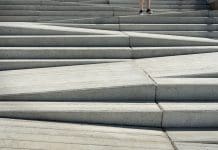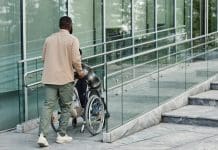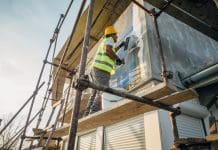A popular misconception about accessibility issues is the notion that the aim is to give disabled people an advantage over non-disabled people. It’s not. The aim is to make reasonable adjustments to try to ensure that disabled people have the same opportunities as everyone else
As part of that, and perhaps bizarrely, sometimes there’s a case to be made for not making any adjustments at all.
With any museum, gallery or stately home it’s clear that efforts should be made to ensure disabled people can make their way around the property safely with the use of ramps and lifts where possible.
They should be provided with safe and accessible vantage points from which to view static or moving displays, including re-enactments of historic events. They should be assisted with understanding and interpreting exhibits and displays, with relevant information being presented in creative and innovative ways which extend beyond the lazy assumption that every visitor can see and hear everything they are presented with.
But times have changed, tourism attractions have moved on and experiential and immersive attractions are everywhere. If you go for a ride on a splash boat, it’s nearly always with the desire to get wet. You don’t want a dry alternative.
So while you might consider introducing some changes to an environment to make life easier for visitors who have certain impairments you should also make sure that in doing so you don’t remove the reason for them coming along in the first place.
Accessibility examinations
We identified a good example when we examined the accessibility of some historic workshops. The entire point of that particular property is to illustrate the less than salubrious working conditions of the individuals who, years ago, negotiated steep, narrow staircases and uneven floorboards and then toiled in cramped spaces with hand tools which were difficult to operate.
If you replace all of that with lifts, level surfaces and ergonomically-friendly automated gadgets you may well still have an attraction that people will pay to see, but there won’t be a lot of history to it.
We worked on another case where someone had recently carried out an access audit at a country house. The assessor had taken a group of disabled people around the site and made a point of visiting the stable block with its cobbled area.
He told the group there was thought being given to removing the cobbles and replacing them with stone flags to make the area more accessible for wheelchair-users and people with other mobility aids. They said they would rather keep the cobbles because it was more authentic and gave them a flavour of what life was like when the yard was in use. They didn’t want that to be removed from their experience of the visit.
A sensible accessibility compromise in such a situation might be to create a level footpath around the edge of the cobbles, providing a suitable access route for disabled people but retaining enough of the history to enhance their experience.
In another scenario the management team at an historic property decided they didn’t want wheelchair users going into the main house because it was thought they would damage the highly polished wooden floor in the hall. They relented when it was pointed out that high heels and other types of everyday footwear were likely to cause far more damage than rubber types, given that no one was proposing wheelchair sports!
Be open-minded about access
At the same time, conservationists should be open-minded about access. When it comes to conservation, just as with planning, it’s not always a case of two plus two equals four. There should always be room for some degree of interpretation which can be considered and discussed on a case by case basis.
The majority of historic properties have evolved over time and are not as they were when they were constructed. Within a building there may be features that can be removed or added to improve access without destroying the property or the artefacts, and there may be other specific attractions which can only be presented using video if some visitors cannot access upper floors and the exhibits cannot be relocated, such as certain artworks and architectural features.
There’s a fine line between preserving the history and making it accessible, and a key point to remember is that it is just not possible to accommodate everybody all the time.
About Access
















